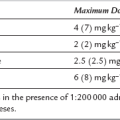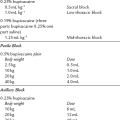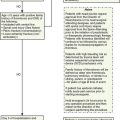You might be struggling with chronic back pain and wondering how physiotherapy can provide relief. Physiotherapy is a crucial intervention for managing and alleviating chronic back pain through targeted exercises, manual therapy, and lifestyle modifications.
The integration of physiotherapy offers significant advancements in the management of chronic back pain. Physiotherapists address pain at its source, enhancing mobility and improving overall quality of life.
The potential benefits are vast, with implications that extend beyond just pain relief. Explore how physiotherapy is reshaping the landscape of chronic back pain management. When looking for more details regarding such services, make sure to check out www.alignhc.com.au. They are experts in physiotherapy and pain management services.

Key Takeaways
- Personalised Treatment Plans: Physiotherapy provides individualised care plans targeting specific pain points and causes.
- Enhanced Mobility and Function: Through exercises and manual therapy, physiotherapy improves flexibility and strengthens back muscles.
- Pain Management Techniques: Techniques like dry needling, heat therapy, and ultrasound reduce pain and inflammation.
- Education and Prevention: Physiotherapists educate patients on posture, ergonomics, and preventive strategies to avoid future pain episodes.
Personalised Treatment Plans for Chronic Back Pain
Physiotherapy offers individualised care plans that specifically target the root causes of chronic back pain. By tailoring treatments to the patient’s unique condition, physiotherapists ensure effective and efficient pain relief. Each treatment plan begins with a comprehensive assessment to identify the underlying causes of pain. This includes evaluating posture, muscle imbalances, and joint function. Based on this assessment, a customised treatment plan is developed, focusing on the specific needs and goals of the patient.
Enhancing Mobility and Function Through Physiotherapy
One of the primary goals of physiotherapy is to enhance mobility and function. Through a combination of targeted exercises and manual therapy, physiotherapists help patients improve their flexibility, strength, and overall movement capabilities. Stretching exercises are designed to increase flexibility and reduce muscle tightness, while strengthening exercises aim to build core and back muscles, providing better support to the spine. Manual therapy techniques, such as spinal manipulation and mobilisation, are used to restore normal joint function and alleviate pain.
Pain Management Techniques in Physiotherapy
Physiotherapy employs various pain management techniques to alleviate chronic back pain. These include:
- Dry Needling: This technique involves inserting thin needles into trigger points to release muscle tension and alleviate pain. It is particularly effective for treating myofascial pain syndrome, a common cause of chronic back pain.
- Heat Therapy: Applying heat to the affected area helps to increase blood flow, reduce muscle stiffness, and promote healing. It is often used in combination with other therapies to enhance their effectiveness.
- Ultrasound Therapy: This technique uses high-frequency sound waves to penetrate deep into the tissues, promoting tissue repair and reducing inflammation. It is especially beneficial for treating soft tissue injuries and chronic pain conditions.
Education and Prevention for Long-Term Relief
Physiotherapists not only treat chronic back pain but also educate patients on maintaining good posture, proper ergonomics, and other preventive strategies. This education helps prevent future episodes of back pain and promotes long-term health. Patients learn how to perform daily activities in ways that minimise stress on their back, such as lifting techniques, sitting postures, and ergonomic adjustments in their work environment. Additionally, physiotherapists provide guidance on lifestyle modifications, including exercise routines, weight management, and stress reduction techniques, to support overall well-being.
Improved Reliability and Durability with Physiotherapy
Integrating physiotherapy into chronic back pain treatment plans bolsters the reliability and durability of results through a consolidated and robust approach. Here’s how physiotherapy enhances back health:
- Enhanced Structural Integrity: Physiotherapy provides a sturdy foundation for back health, reducing the risk of damage from poor posture or mechanical stress. This structural integrity ensures that your back can withstand challenging activities and prevents recurrent pain episodes.
- Improved Functionality: The integrated design of physiotherapy treatments minimises the need for additional medications and surgical interventions. This reduction in interference results in improved functionality, reducing the chances of chronic pain recurrence and enhancing the patient’s quality of life.
- Increased Resistance to Stress: Physiotherapy offers better stress management capabilities compared to traditional pain management methods. The exercises allow for efficient muscle strengthening and stress relief, preventing future pain issues and ensuring the longevity of your back health.
Advancements in Back Pain Management
Physiotherapy represents a cutting-edge approach to back pain management, with significant advancements in performance. These treatments offer enhanced pain relief, reduced dependence on medications, and improved spinal health, all crucial for overall well-being.
One key aspect driving back pain management performance is the ability to handle high-intensity physical activities. Physiotherapy enables patients to create intricate exercise routines that minimise pain and maintain functional integrity, allowing for an active lifestyle without compromising reliability.
Moreover, the flexibility of physiotherapy contributes to improved back pain management by enabling compact and efficient treatment plans that reduce the overall dependency on medications. This not only enhances mobility but also enhances the overall efficiency of the treatment.
In essence, the advancements in back pain management brought about by physiotherapy are instrumental in meeting the growing demands for effective, non-invasive, and sustainable pain relief solutions.
FAQs
Q: How often should I see a physiotherapist for chronic back pain?
A: The frequency depends on your specific condition and treatment plan. Typically, patients may start with weekly sessions and gradually reduce frequency as they improve.
Q: What types of exercises might a physiotherapist recommend?
A: Common exercises include stretching, strengthening, and mobility exercises tailored to your pain and mobility levels.
Q: Is physiotherapy covered by insurance?
A: Many insurance plans cover physiotherapy, but coverage can vary. It’s best to check with your provider for specific details.





